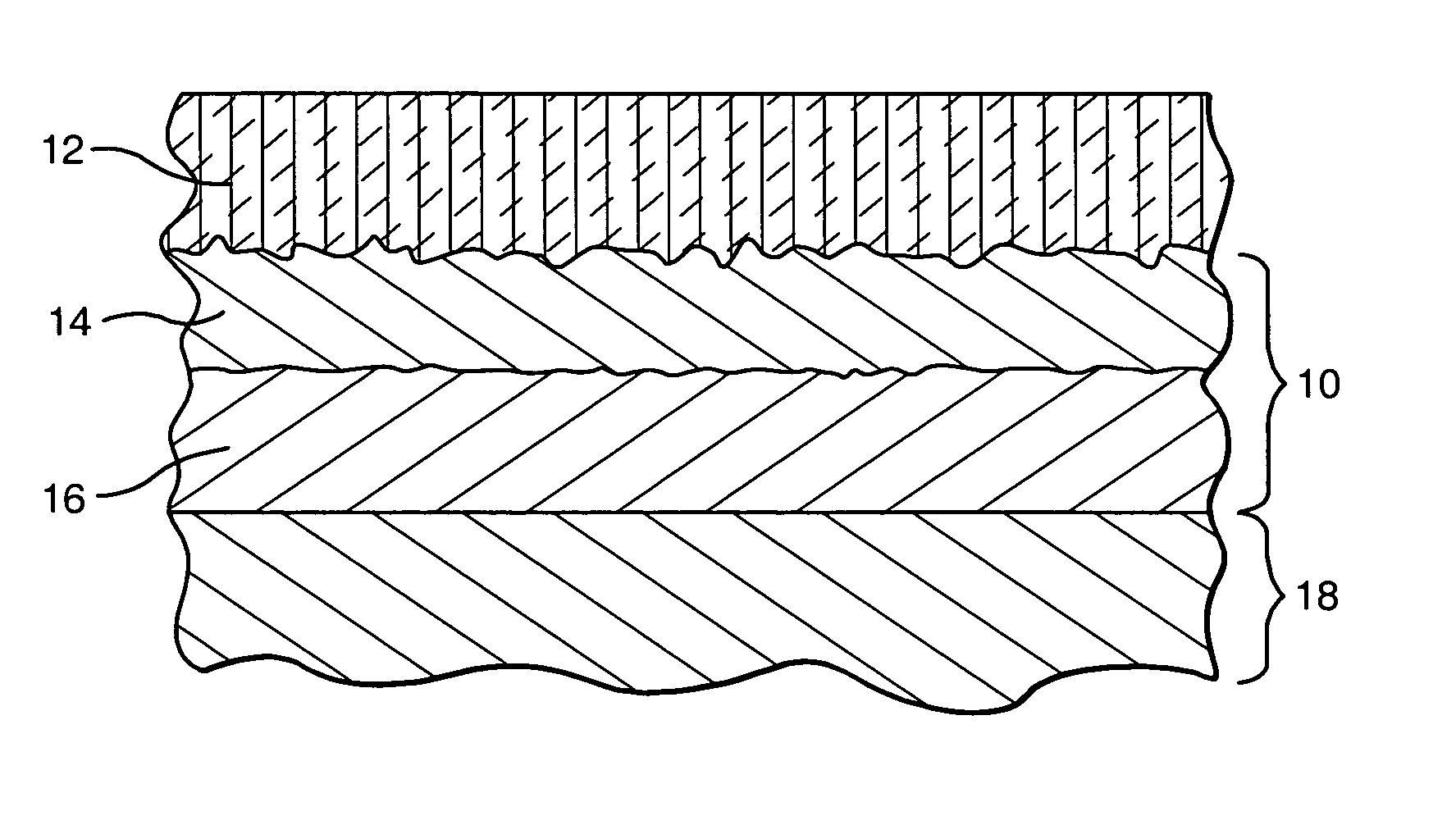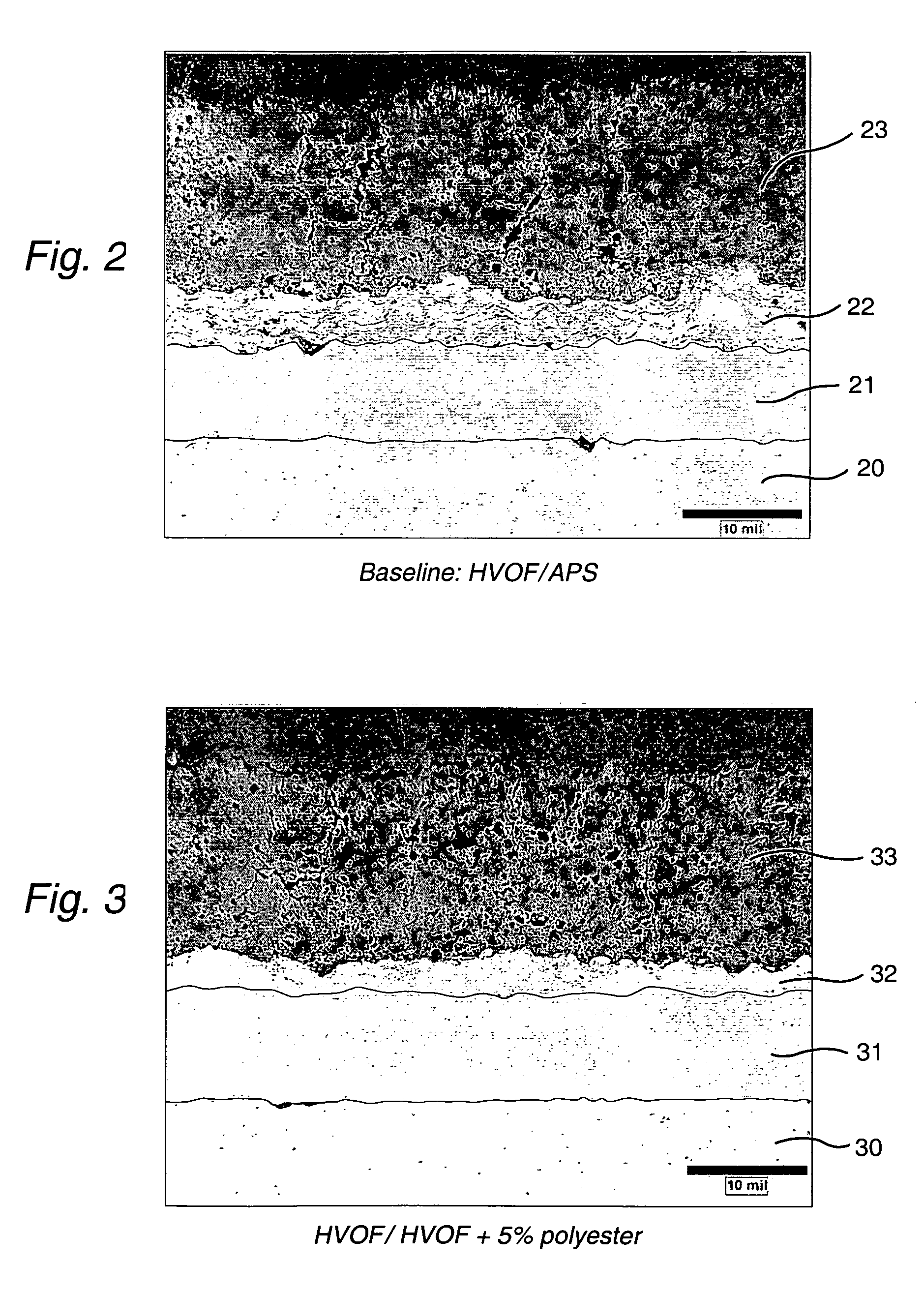Bi-layer HVOF coating with controlled porosity for use in thermal barrier coatings
a technology of thermal barrier coating and bi-layer bonding coat, which is applied in the field of protective coatings for metal alloy components, can solve the problems that the state of the art of using hvof and aps to form a bi-layer bonding coat with such attributes would not be considered “manufacturer friendly” and achieves the effects of improving the ductility of the bonding coat, promoting roughness, and sacrificing mechanical compliance, strength or stability
- Summary
- Abstract
- Description
- Claims
- Application Information
AI Technical Summary
Benefits of technology
Problems solved by technology
Method used
Image
Examples
example 1
[0027]A bi-layer coating was fabricated according to the invention using JP5000 HVOF equipment manufactured by TAFA. An initial dense layer of NiCrAlY using Praxair Powder No. Ni211-17 (Bal-Ni-22-Cr-10Al-1-Y) was initially applied to an IN718 substrate (52Ni-19Fe-19Cr-5Nb-3Mo-1Ti) using HVOF.
[0028]A second porous layer was then created by spraying a mixture of NiCrAlY, Ni211-17, and polyester powder, namely Metco 600NS powder. The Metco 600NS, Ni211 and IN718 are commercially available materials. After spraying the second coating using HVOF, a metallographic section was prepared and evaluated. The examination confirmed that the outer layer exhibited increased porosity as compared to the more dense inner layer. Using quantitative image analysis, the amount of porosity of the outer layer was determined to be about 3 to 4% of the total layer volume.
[0029]Follow-up experiments evaluated other ratios of NiCrAlY / polyester mixtures. Blends of 5, 9, and 15% by weight polyester were fabricat...
PUM
| Property | Measurement | Unit |
|---|---|---|
| thickness | aaaaa | aaaaa |
| thickness | aaaaa | aaaaa |
| thickness | aaaaa | aaaaa |
Abstract
Description
Claims
Application Information
 Login to View More
Login to View More - R&D
- Intellectual Property
- Life Sciences
- Materials
- Tech Scout
- Unparalleled Data Quality
- Higher Quality Content
- 60% Fewer Hallucinations
Browse by: Latest US Patents, China's latest patents, Technical Efficacy Thesaurus, Application Domain, Technology Topic, Popular Technical Reports.
© 2025 PatSnap. All rights reserved.Legal|Privacy policy|Modern Slavery Act Transparency Statement|Sitemap|About US| Contact US: help@patsnap.com



